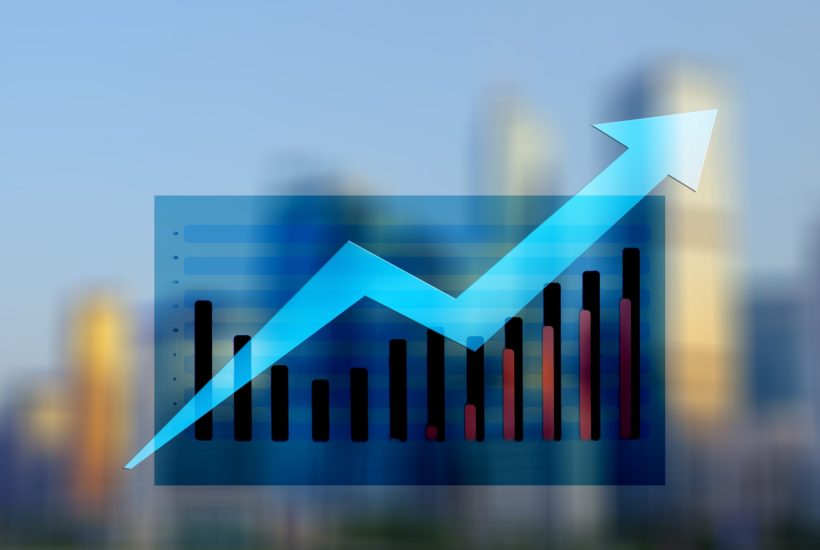Featured
The ESG Leaders Index showed strength in recent months
All sectors suffered during the market debacle after the outbreak of the COVID-19 pandemic, including equities linked to the long term environmental trend of ESGs. After the surge in sales, investors repositioned back on equities, and ESG indices have returned to relative strength in recent months.Thus, ESG-related inflows this year have already exceeded the net total invested in 2019.

The ESG Leaders Index experienced a decline broadly similar to the general market during the big sell-off. However, it took off at a faster pace, especially in May when governments’ determination to use the massive economic restart measures to go greener emerged with greater emphasis.
In particular, European governments are taking the opportunity of the COVID-19 pandemic to accelerate the transition to carbon reduction. The European Union’s “Green New Deal” highlights a strong focus on initiatives to help achieve climate neutrality by promoting renewable energy, hydrogen and building renovation. “ESG leaders do not seem particularly expensive and negotiate with a PE ratio similar to that of the wider market,” Barclays analysts pointed out, indicating utilities as the main beneficiaries of the ESG trend.
European and global ESG ETFs have enjoyed consistently positive net inflows during the market downturn and when the recovery started. Thus, ESG-related inflows this year have already exceeded the net total invested in 2019.
Find out more details about the ESG Leaders Index and read the latest economic news with the Born2Invest mobile app.
The COVID-19 pandemic has not held back inflows
The growing sensitivity to ESG issues has been a long-standing trend and this factor is increasingly an essential component in investors’ portfolio allocation decisions. This trend is evident in the ETF industry with strong growth rates of AuMs on ESG pegged replicants.
“I wouldn’t be surprised if at the end of 2020, ESG ETFs in Europe were raising 30 billion, doubling the assets these instruments had at the end of 2019,” said Francesco Branda, Head of Passive & ETF Specialist Sales Italy at UBS AM, who believes this trend is so strong that the market could see assets double year-on-year in 2021 and 2022. This growth could benefit not only from passive equity solutions, but also bond solutions, which to date have taken only the first steps.
The magnitude of this trend is so strong that, even during the most acute months of the crisis caused by COVID-19, it has not slowed down. While, on the one hand, flows in European “core” ETFs (equities and bonds) quickly found themselves in negative territory, with investors adapting their tactical allocation to take into account the further uncertainty, reducing above all the “risky” component of their portfolio, on the other hand, sustainable portfolios did not suffer a similar decline in flows and continued their funding path. “This may suggest that investors perceive sustainable assets as somewhat less risky than traditional exposure – argues Francesco Branda – and think of sustainable investment as a longer-term allocation more in line with their values, factors that tend not to be impacted by sudden shocks.”
ESG ETFs in Europe
The ESG ETFs available in Europe have grown rapidly in recent years and amounted to 119 products at the end of January 2020 (ETFGI, January 2020). Likewise, assets under management have increased at an impressive rate, even tripling during 2019. Most of these assets are on equity instruments, but the collection of fixed income ESG ETFs has accelerated rapidly. Almost 80% of the passive ESG instruments currently available are equities (UBS Asset Management, January 2020). Nevertheless, the number of fixed income ESG ETFs has doubled in the space of a year, highlighting the need for ESG integration in this space as regulators increase their pressure on asset holders and other stakeholders.
European ESG ETFs account for about 4% of the entire European ETF market (as of March 13th 2020). This figure may not seem significant, but over the last 15 months (January 1st 2019 to March 13th 2020), ESG ETFs have collected 20% of all new assets transferred to European ETFs. Net inflows are well above the current market share, which gives concrete evidence of the strong growth of ESG ETFs in this recent period, which is consistent with recent years.
At this point in time, asset growth is mainly driven by ESG equity ETFs, which have collected 40% of the net new assets that have been contributed to passive equity solutions. On the bond front, growth is also significant, but relatively small. “One explanation could be the relative scarcity of sustainable fixed income solutions: of the 119 sustainable ETFs we have identified in Europe, only 24 are bonds,” Branda pointed out.
__
(Featured image by geralt via Pixabay)
DISCLAIMER: This article was written by a third party contributor and does not reflect the opinion of Born2Invest, its management, staff or its associates. Please review our disclaimer for more information.
This article may include forward-looking statements. These forward-looking statements generally are identified by the words “believe,” “project,” “estimate,” “become,” “plan,” “will,” and similar expressions. These forward-looking statements involve known and unknown risks as well as uncertainties, including those discussed in the following cautionary statements and elsewhere in this article and on this site. Although the Company may believe that its expectations are based on reasonable assumptions, the actual results that the Company may achieve may differ materially from any forward-looking statements, which reflect the opinions of the management of the Company only as of the date hereof. Additionally, please make sure to read these important disclosures.
First published in FINANZA ON LINE, a third-party contributor translated and adapted the article from the original. In case of discrepancy, the original will prevail.
Although we made reasonable efforts to provide accurate translations, some parts may be incorrect. Born2Invest assumes no responsibility for errors, omissions or ambiguities in the translations provided on this website. Any person or entity relying on translated content does so at their own risk. Born2Invest is not responsible for losses caused by such reliance on the accuracy or reliability of translated information. If you wish to report an error or inaccuracy in the translation, we encourage you to contact us.

-

 Fintech2 weeks ago
Fintech2 weeks agoItaly Issues First Natively Tokenized Minibond on Public Blockchain
-

 Fintech1 week ago
Fintech1 week agoN26 Hires UBS Executive to Lead Turnaround Amid Regulatory Pressure
-

 Biotech5 days ago
Biotech5 days agoCAR-T Therapies: From Breakthrough Cancer Treatment to Faster, Safer, and More Accessible Immunotherapy
-

 Cannabis2 weeks ago
Cannabis2 weeks agoLuxembourg’s Cannabis Paradox: Legal at Home, Restricted Everywhere Else
























